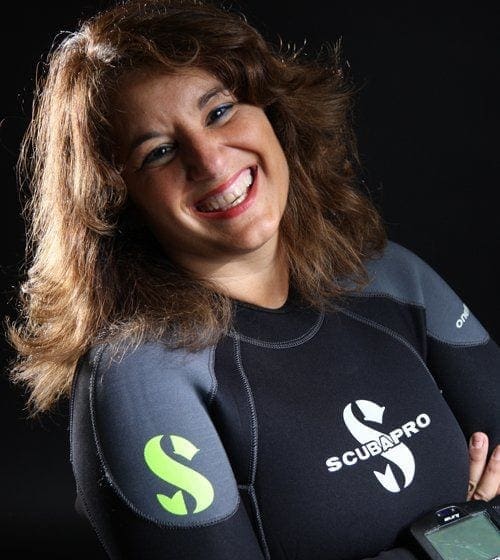Tips for better buoyancy and air consumption
by Margo Peyton, President of Kids Sea Camp
1. Good buoyancy is key. Make sure you are neutrally buoyant, trim your gear so that nothing is hanging or dragging below you, try to balance your weights evenly. 4lb on left then 4lb on right. Move them around, ankle weights are also used, I use 1lb on each ankle when diving with my camera. Some BC’s like my ScubaPro Lady Hawk have pockets up high in the back, I often put a 1 lb in each of those pockets. A Peak performance buoyancy class will be a fun continuing education class as it will teach you more about good buoyancy control.
2. Breathe slowly and deeply when your diving, don’t ever hold your breath. Short and shallow breaths can be dangerous and create dead air spaces.
3. Streamline your gear and have property fitting equipment, nothing dangling or dragging. Make sure your equipment is in good working order and has been serviced regularly by your local dive shop.
4. Use proper kick cycles and don’t swim while diving (no hands needed) Make sure you’re using Scuba fins, not snorkel fins. Dive fins should be longer and fit comfortably. Go to your local dive shop and try on a few pairs some adults like me prefer full foot fins, for kids I recommend fins with straps for growing feet.
5. Make sure to be suited up as conditions dictate. Stay warm, choices of a shorty or long wet-suit, 2 mm, 3 mm, 5 mml and more are available depending on the temperature of the water your diving. In the Galapagos, I use a 5 or 7 mm long suit, in Bonaire, I use a 2 mm shorty. New wetsuits are more buoyant that older ones and thickness makes a big difference as well. The thicker the suit the more weight needed. Long suits will require more weight than a shorty.
6. Be in good physical health, never dive when you’re not feeling well and always consult your doctor about any medications your taking as they could have different effects while diving. Make sure to fill out waivers truthfully, so that if something does happen it will be easier to determine what could be going on and help can be provided faster and more efficiently. ed faster and more efficiently.
ed faster and more efficiently.
7. Dive often. The more you dive, the more confident and comfortable you will be, and buoyancy becomes easier.
8. Stay close to your buddy. Having to constantly chase your buddy can use more air on a dive, and create stress.
9. Dive into a current at the start of a dive when you are not tired so you can then dive with the current returning at the end of your dive. Make sure not to dive in strong currents, check with your local dive shop or dive professional before entering the water to determine safe dive conditions. Always let someone know you are going diving, and never dive alone.
10. Relax, enjoy your dive, it’s called recreation for a reason. Take only photos, leave only bubbles. Observe marine life and don’t touch anything living.
11. Take an advanced open water class which covers, a navigation dive, a deep dive, a buoyancy dive, a night dive, a photography dive, and Fish ID dive. All of which will make you feel more confident in direction, buoyancy and marine life knowledge allowing you to feel more comfortable diving. There are other specialty dives you can take in an Advanced Open Water Class, such as Underwater Naturalist, Wreck or even zombie dives. Go to www.padi.com for more information on courses.
12. Don’t over think air consumption, the more you think about it the more anxious you become and the fewer chances for relaxation to occur.
13. Take your family diving and enjoy diving with your kids. They will look to you as role models, and strive to dive like you do. Be a good role model. If you have not been diving in over a year, check out PADI’s new reactivate online update.

